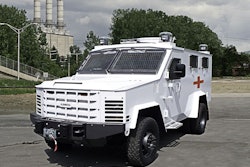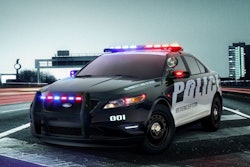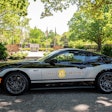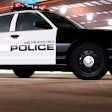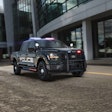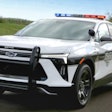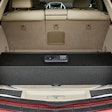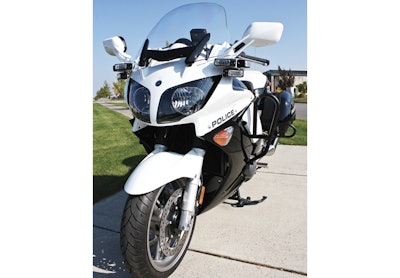 Photo courtesy of Enforcement Motors.
Photo courtesy of Enforcement Motors.
According to Enforcement Motors' vice president Andy Hartin, the Yamaha FJR1300P—which has been on the market for more than a decade—has key attributes that make it very suitable for law enforcement duty, including a proven platform and many years of reliable police operation in European markets.
Comfort and speed is another reason why Hartin believes Enforcement Motors' new FJR1300P will be very popular with officers. "What I hear from the motor officers is that the bike is very rider-friendly," he says.
The primary reason that Hartin believes the FJR1300P will be so comfortable for motor officers is that it allows them to ride upright in more of a touring bike position with adjustable seat heights. "Some police motorcycles force riders to lean forward, causing them to constantly have to raise their heads to look for violators. In an eight- to 10-hour shift, that can cause fatigue to the officer's back and neck," he says. "For motor officers, the bike is their office chair, their desk, and a mode of transportation. Any time you can achieve a more comfortable, relaxed position, you will have a more relaxed officer."
To make it suitable for American law enforcement duty the FJ1300P required modification, including a stronger electrical system to support emergency equipment such as radios, emergency lighting, and sirens. Devising such a secondary electrical system involved more than just strapping a second battery on the bike. Enforcement Motors engineered a secondary wiring system to support such electronics and emergency equipment.
Hartin also decided to change the way the siren has been mounted. "Most of the police motors on the road have the siren system on the crash bar," he says. "That adds the weight to one side or the other. Our siren system is dead center of the bike, and it does not affect the volume, nor is it affected by the wind." Hartin adds that Enforcement Motors has made weight distribution a priority. "Equipment mounting design equates to proper weight distribution and handling," he explains.
Enforcement Motors has been working on adapting the FJR1300P for American law enforcement duty for a little more than two years. Earlier versions of the bike did not have some of the features that agencies demanded, Hartin says. The 2013 model FJR added those features, including electronic cruise control, digital gauges, and a speedometer with 1-mph increments.
Hartin believes the 2013 model will be very popular with law enforcement agencies. "It's a great law enforcement bike," he says. "I've been on several sales demonstrations in the last month and have received an overwhelming amount of positive feedback. The officers love it. One officer jumped on it for the first time and ran his agency's cone pattern fast enough to qualify. That's a testimony to the balance and handling of this bike and how easy it is to ride."
The FJR1300P is also easy to maintain and economical to service, according to installer and former motorcycle racer Jim Evans. "The valve adjustment service intervals are 26,000 miles, and the Yamaha product is exemplary for clutch, drive train, and general durability. The FJR1300P will handle the stress of police duty very well," Evans says.
Enforcement Motors is now taking orders for the Yamaha FJR1300P. Base models start at less than $21,000.






